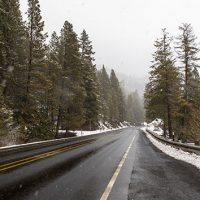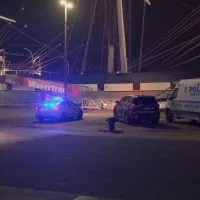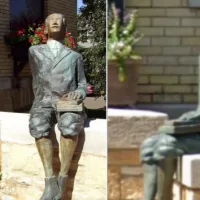
 iStock/Thinkstock(NEW YORK) — As Wednesday’s nor’easter leaves slippery black ice in its wake, here’s why black ice is so dangerous.
iStock/Thinkstock(NEW YORK) — As Wednesday’s nor’easter leaves slippery black ice in its wake, here’s why black ice is so dangerous.
Black ice occurs when liquid freezes on a black roadway. The ice is completely clear, so it’s difficult for motorists and pedestrians to distinguish the difference between a wet roadway and slippery ice.
Black ice tends to form in the shaded areas of the roadway and on bridges and overpasses that freeze first and melt last, AAA National spokeswoman Jeanette Casselano told ABC News earlier this winter.
It takes a vehicle nine times longer to stop in ice and snow compared to clear conditions, added AAA Northeast spokesman Robert Sinclair.
While salting can help prevent black ice from developing, the effectiveness of the salt goes down once temperatures fall below 20 degrees.
Here are AAA’s tips for driving in winter weather:
– Avoid tailgating.
– Don’t use cruise control on slippery roads.
– Slow down immediately when you see brake lights ahead.
– Don’t slam on your brakes.
– If your car skids, continue to steer in the direction you want the car to go.
Copyright © 2018, ABC Radio. All rights reserved.















